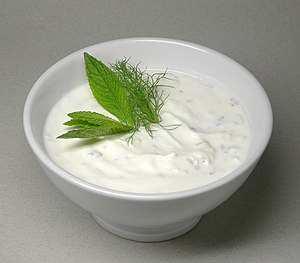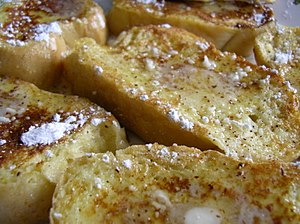Wednesday, October 17, 2012
There is cinnamon in the green beans!
The Middle Eastern culture typically adds cinnamon as a spice to almost everything from rice pudding to vegetables to lamb ragout. Cinnamon imparts a marvelous, heady, almost intoxicating aroma. And when mixed with honey and lemons as in chicken tagine from Morocco, I could swoon!
Tuesday, October 16, 2012
Fava Beans
Fava beans are native of North Africa, and almost ubiquitous throughout the Middle East, but almost unknown in the States. They are the larger cousin of the green bean, and with greater size also comes greater flavor. Where our domestic green beans may be mild in flavor, the fava bean has a strong, almost smoky, almost meat-like flavor. It is a very starchy bean, and is used widely for hummus or falafel. My grandmother used to prepare fava beans as a main dish, simply cooking them with onions and tomatoes until they were soft and tasty.
You could prepare them with beef, chicken or more typically lamb, and add some red wine to the pot for extra flavor. Serve either alone as a side dish, or over rice.
You could prepare them with beef, chicken or more typically lamb, and add some red wine to the pot for extra flavor. Serve either alone as a side dish, or over rice.
Wednesday, December 28, 2011
Sunday, November 20, 2011
Friday, November 18, 2011
Addes Pilaf (Persian Rice and Lentils)
Almost every culture seems to have its own version of lentils and rice. One of my favorites is Persian.
Ingredients:
Lentils 8 ounces long-grain riceGround lamb2 ounces raisins2 large onions, chopped2 -3 tablespoons olive oilSalt and black pepper to tastePlain yogurtDirections
Rice may be soaked or not, depending on preference. Cook according to usual directions, with about 2 to 1 water to rice. Wash lentil and cook in about 3 cups of salted water. Cook over medium heat for about 15-20 minutes until tender. Peel and thinly slice onions, and fry in olive oil until golden brown. Set aside. Sauté ground lamb in a bit of oil with salt and black pepper for about 10 minutes.Wash raisins and dates. In a separate pot, place half the cooked rice. Add the fried ground lamb, along with the chopped raisins and dates. Add the remaining rice, place over the heat and mix well. Heat thoroughly, about 15 minutes. A variation on the above is to serve the components separately, beginning with white rice, then the lentils, then the ground lamb, then the fried onions, on top of which place a dollop of yogurt. Heaven knows no bounds!
Ingredients:
Lentils 8 ounces long-grain riceGround lamb2 ounces raisins2 large onions, chopped2 -3 tablespoons olive oilSalt and black pepper to tastePlain yogurtDirections
Rice may be soaked or not, depending on preference. Cook according to usual directions, with about 2 to 1 water to rice. Wash lentil and cook in about 3 cups of salted water. Cook over medium heat for about 15-20 minutes until tender. Peel and thinly slice onions, and fry in olive oil until golden brown. Set aside. Sauté ground lamb in a bit of oil with salt and black pepper for about 10 minutes.Wash raisins and dates. In a separate pot, place half the cooked rice. Add the fried ground lamb, along with the chopped raisins and dates. Add the remaining rice, place over the heat and mix well. Heat thoroughly, about 15 minutes. A variation on the above is to serve the components separately, beginning with white rice, then the lentils, then the ground lamb, then the fried onions, on top of which place a dollop of yogurt. Heaven knows no bounds!
Saturday, May 14, 2011
Kadaifi
Oh, my, the courage my grandmother had! She arose at 4 a.m., read her Bible, then set out to work. The Israel of my youth was a barren place, and we had few amenities. We had a radio that played two stations, one in Hebrew and one in Arabic. We had a wooden icebox that required refilling with a chunk of ice daily. We had a hot water heater that got a workout Friday nights - the other days we took cold showers. But what we did have was Grandma's muscles!
Revanades de Parida
This was Grandma's version of French Toast. Since she was Turkish, it might better be called Turkish Toast, or better yet, bread pudding. But she called it Revanadas de Parida. As food was precious, I was reminded repeatedly that throwing out bread was a sin, so the practice at home was to save all leftover bread until we could make Revanades de Parida. At the time, we didn't have sliced bread. Our bread was purchased whole, and when we had enough stale bread, Grandma went to work. The process is basically the same as for French Toast, except for a few variations.
Ingredients
Stale bread, preferably white or challahEggs, beatenHot milkSugarPreparation
Break up the stale bread in large chunks and soak in the hot milk until thoroughly imbibed. Then carefully lift the soaked bread and dunk on all sides into the beaten egg, and fry to a golden brown in oil or butter in a heavy skillet. Sprinkle sugar over the toast and be prepared to be amazed!
Subscribe to:
Posts (Atom)




